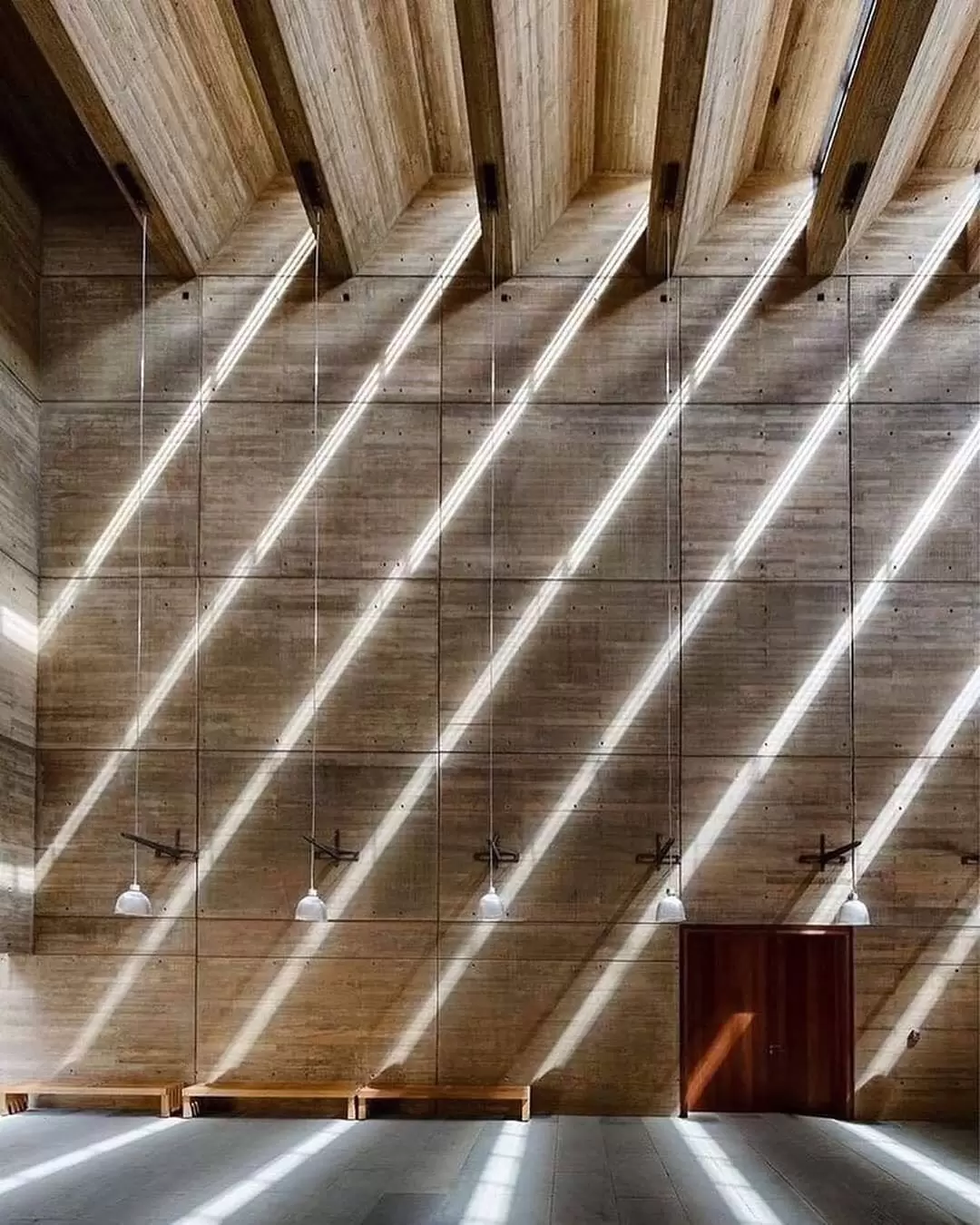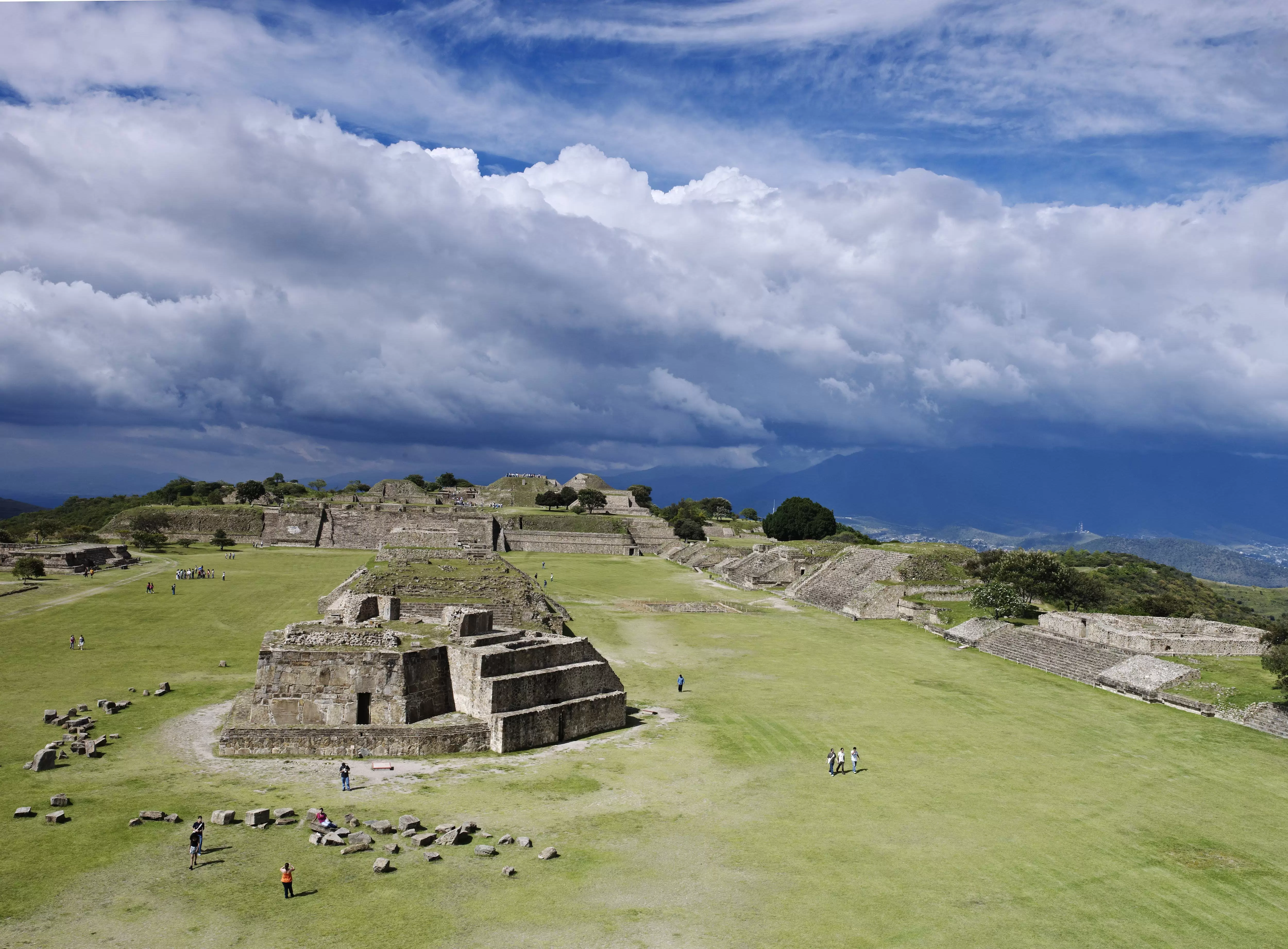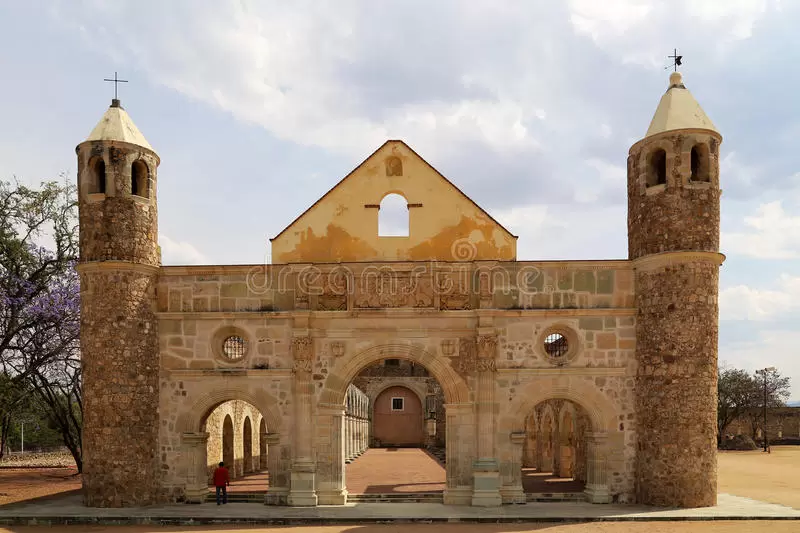Oaxaca, located in the southwest of Mexico, is a city famous for its historical and cultural richness. Oaxaca, which hosted the Zapotec civilization, still preserves this cultural heritage and attracts tourists.
Among Oaxaca's historical riches are places such as the Monte Albán ancient city, the Mitla archaeological site, and the Santo Domingo de Guzmán church. Monte Albán was used as the center of the Zapotec civilization and is now listed on the UNESCO World Heritage List. The Mitla archaeological site reflects the interaction between the Zapotec and Mixtec civilizations.
The Santo Domingo de Guzmán church is one of the most important structures in Oaxaca. Built in the 16th century in the Baroque style, it houses many works of art.
Oaxaca's historical riches increase the city's tourism potential and attract visitors. Additionally, these riches are of great importance for the preservation of Mexico's historical and cultural heritage.
Historical Heritage of Oaxaca

Oaxaca, located in the southwest of Mexico, is famous for its rich historical heritage and cultural diversity. This region carries traces of the Zapotec and Mixtec civilizations, and the remnants of these civilizations can still be seen in the area.
Oaxaca is home to many historical structures that have been included in the UNESCO World Heritage List. These include ancient Zapotec cities such as Monte Albán, Mitla, Yagul, and Dainzú. These cities are considered to be one of Mexico's most important archaeological sites.
Monte Albán is one of Oaxaca's most important ancient cities. It was founded by the Zapotec civilization in 500 BC and is one of Mexico's largest ancient cities. This city served as the political, religious, and cultural center of the Zapotecs.
Mitla is one of Oaxaca's most important Mixtec cities. This city was built by the Mixtec civilization and is one of Mexico's best-preserved ancient structures. Mitla is one of the best examples of Mixtec architecture and has been included in the UNESCO World Heritage List.
Yagul and Dainzú are Oaxaca's other ancient cities. These cities carry traces of the Zapotec and Mixtec civilizations and are considered to be one of Mexico's most important archaeological sites.
Oaxaca is one of Mexico's most important tourist destinations due to its historical heritage and cultural diversity. This region attracts visitors with its rich historical heritage and cultural diversity. Oaxaca is a must-see place for anyone who wants to explore Mexico's historical and cultural richness.
Cultural Riches of Oaxaca

Oaxaca is a state located in the southwest of Mexico and is famous for its cultural richness. This region has a rich cultural heritage by preserving the traditional lifestyles of indigenous peoples.
One of the most important cultural riches of Oaxaca is the Zapotec civilization. This civilization has been living in the region since 500 BC and still maintains its traditional way of life. Zapotecs are famous for their traditional handicrafts, music, and dances. In addition, the use of the Zapotec language helps to preserve this culture.
Another cultural richness of Oaxaca is the Mixtec civilization. The Mixtec civilization has been living in the region since 1000 BC and is famous for its traditional handicrafts, music, and dances. The use of the Mixtec language helps to preserve this culture.
Traditional handicrafts are also among the cultural riches of Oaxaca. Many handicrafts such as ceramics, weaving, wood carving, and metalworking are produced in the region. These handicrafts are part of the region's cultural heritage and are also of interest to tourists.
Food culture also holds an important place among the cultural riches of Oaxaca. In addition to traditional Mexican cuisine, local dishes are also available in the region. These dishes are part of the region's cultural heritage and are also of interest to tourists.
In conclusion, the cultural riches of Oaxaca are part of the region's historical and cultural heritage. These riches increase the tourism potential of the region and help indigenous peoples preserve their traditional way of life. Tourists visiting Oaxaca will find many opportunities to discover the region's cultural riches.
Historical Sites of Oaxaca

Oaxaca, located in the southwest of Mexico, is a city famous for its rich historical and cultural heritage. Oaxaca was influenced by the Aztec and Maya civilizations and was an important center during the Spanish colonial period. Therefore, there are many historical sites in the city.
One of Oaxaca's most famous historical sites is Monte Albán. This ancient city was founded by the Zapotecs in 500 BC and was used for about 1300 years. Monte Albán is home to many structures such as a large square, temples, palaces, and astronomical observatories.
Other important historical sites in Oaxaca include the ancient cities of Mitla, Yagul, and Zaachila. Mitla is a complex of temples built by the Zapotecs. Yagul was influenced by the Zapotecs and Mixtec civilizations and contains structures such as a large fortress, temples, and tombs. Zaachila was another important center of the Zapotecs, and its ruins can still be seen today.
Oaxaca also hosts many historical structures from the Spanish colonial period. The Santo Domingo Church in the city center was built in the 16th century and is notable for its baroque architecture. Additionally, Oaxaca has many museums and art galleries, reflecting the city's rich cultural heritage.
Oaxaca's historical sites offer visitors the opportunity to explore Mexico's rich history and culture. These ancient cities and structures carry the traces of Mexico's ancient civilizations and allow visitors to embark on a historical journey. Additionally, Oaxaca's historical sites are listed on the UNESCO World Heritage List and are recognized worldwide.
Historical Monuments of Oaxaca
Oaxaca is a state located in the southwest of Mexico and is famous for its historical monuments. These monuments reflect Oaxaca's rich historical and cultural heritage.
Monte Albán is one of Oaxaca's most important historical monuments. This ancient city was founded by the Zapotec civilization in 500 BC. Monte Albán is one of Mexico's largest ancient cities and is listed on the UNESCO World Heritage List.
Mitla is another important ancient city in Oaxaca. This ancient city was built by the Zapotec and Mixtec civilizations. Mitla is particularly famous for its mosaic patterns and is one of Mexico's best-preserved ancient cities.
Other important structures among Oaxaca's historical monuments include the Santo Domingo Church, Oaxaca Cathedral, and the Benito Juarez Monument. The Santo Domingo Church was built in the 16th century and is one of Oaxaca's most beautiful baroque churches. Oaxaca Cathedral was built in the 16th century and is a symbol of Spanish colonization. The Benito Juarez Monument was built to commemorate Benito Juarez, Mexico's first indigenous president.
Oaxaca's historical monuments reflect Mexico's rich historical and cultural heritage. These structures offer visitors the opportunity to trace the footsteps of ancient civilizations and learn more about Mexico's history. Oaxaca's historical monuments play an important role in preserving Mexico's cultural richness.
Historical Values of Oaxaca

Oaxaca is a state located in the southwest of Mexico and is famous for its historical values. This region is one of the oldest settlements in Mexico and has a rich cultural heritage.
Among Oaxaca's historical values are remnants of the ancient Zapotec civilization, colonial period architecture, and traditional handicrafts. Monte Albán is the most important ancient Zapotec settlement in Oaxaca and is listed on the UNESCO World Heritage List. This ancient city has a history dating back to 500 BC and is one of the most important centers of Zapotec culture.
Oaxaca also has one of the best examples of Spanish colonial period architecture. The city center is full of many churches, monasteries, and palaces built in the 16th century. These structures are some of the most beautiful examples of Spanish architecture and still attract visitors today.
Traditional handicrafts are also among Oaxaca's historical values. The region is famous for hand-woven carpets, ceramics, wood carvings, and other handmade products. These handicrafts are part of the region's rich cultural heritage and are still produced by local people.
Oaxaca's historical values play an important role in the region's tourism industry. Visitors flock to the region to explore ancient Zapotec ruins, colonial architecture, and traditional handicrafts. These tourism activities contribute to the region's economy and improve the standard of living for local people.
In conclusion, Oaxaca's historical values are part of the region's rich cultural heritage. Ancient Zapotec ruins, colonial architecture, and traditional handicrafts play an important role in the region's tourism industry and attract visitors. These historical values contribute to the region's economy and improve the standard of living for local people.

Comments